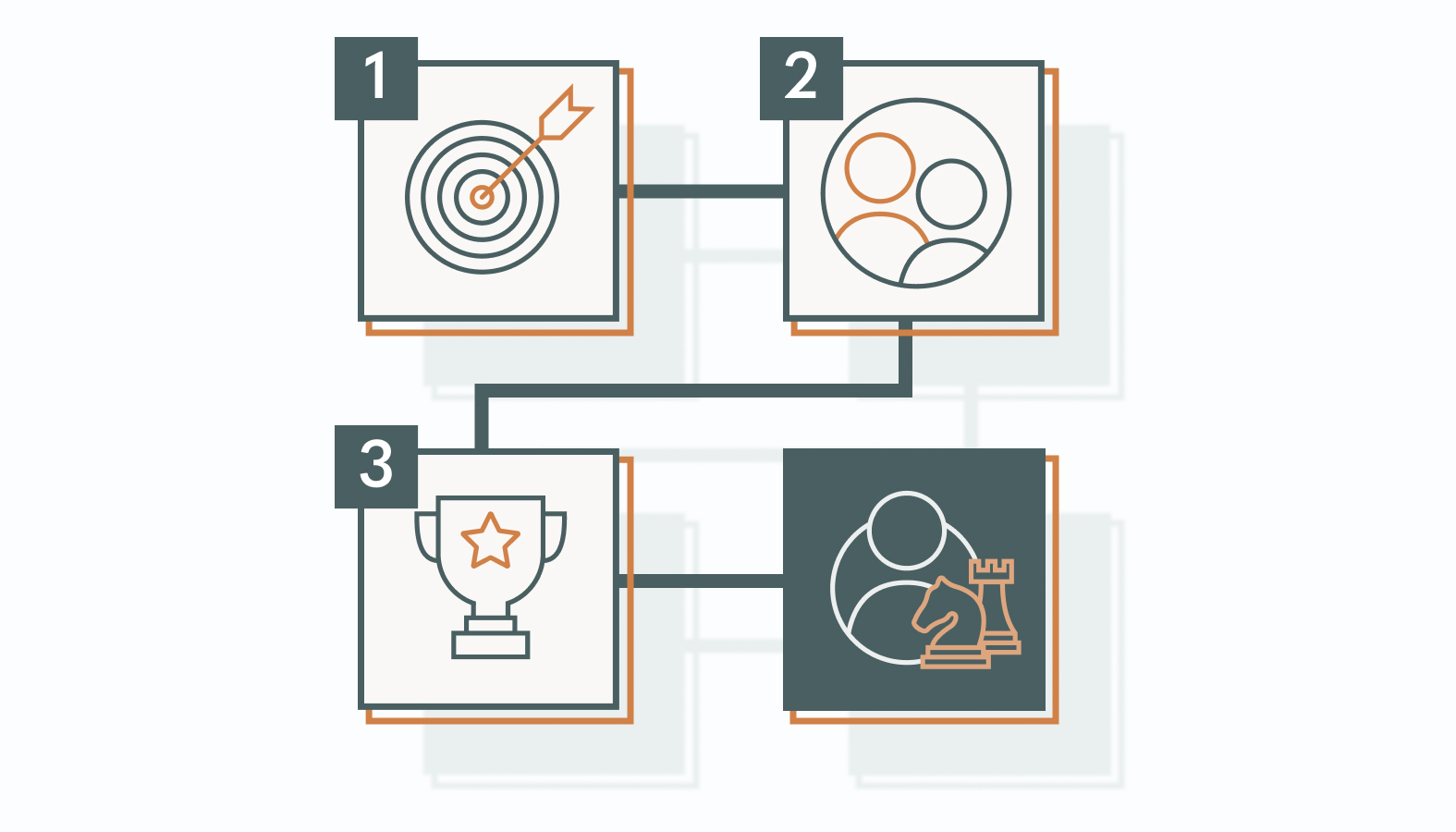You’ve got the tools, the talent, and the goals, but something’s off. Campaigns often feel disjointed, reporting is delayed, and decisions take longer than necessary to implement. That’s usually a sign your marketing operations management needs attention.
At its core, marketing ops is about building the structure and systems that enable strategy to scale. It’s what keeps teams aligned, tech stacks productive, and performance measurable. Without it, even the best ideas get stuck in execution limbo.
This guide walks through the systems, strategy, and performance elements that drive effective marketing operations — and how to make them work together. Let’s get into what it takes to run marketing like a machine.
Understanding Marketing Operations
Marketing operations are the engine behind a high-performing marketing strategy. They provide the structure and systems that make execution efficient and results consistent.
At the center of this discipline is the planning, execution, and optimization of marketing activities to support business goals. When done right, marketing operations align every campaign and initiative with broader objectives, streamlining collaboration across teams.
Key Components of Marketing Operations
A strong marketing operations framework rests on three core pillars working in sync:
- Strategy: A solid strategy sets direction and keeps teams aligned. It begins with understanding the market, knowing your customer, and staying informed about competitive shifts. From there, you shape a clear plan that supports business growth.
- Technology: The right tech does more than automate tasks—it sharpens communication, manages data at scale, and keeps workflows smooth. CRMs, automation tools, and analytics platforms are standard gear for any modern marketing team.
- Analytics: Smart marketing relies on clear insights. Analytics uncover how customers behave, which campaigns are successful, and where the market is heading. With that insight, marketers can refine strategies, justify their spending, and improve outcomes.
When these components work together, marketing operations become a flexible, performance-driven system. This is how marketing stops being reactive and starts accelerating growth with precision.
Why Marketing Operations Management Matters
Marketing operations management provides a framework for effective execution and implementation. It connects marketing strategy to business results through focus, coordination, and precision. When done well, it enhances how teams work, how decisions are made, how budgets are allocated, and how technology drives outcomes.
Marketing operations management keeps marketing efforts running smoothly by:
1) Aligning Marketing Strategies with Business Goals
Strategic alignment keeps marketing grounded in purpose. It connects every initiative to business priorities, such as revenue growth, customer retention, or product expansion. That connection turns disconnected tactics into a cohesive plan.
The challenge? Markets shift fast. Priorities change. Customers evolve. However, with clear alignment, teams stay focused, budgets remain justified, and performance stays relevant.
2) Boosting Team Efficiency and Productivity
Strong operations eliminate drag. Standardized workflows and project tools give teams a repeatable system for planning, tracking, and delivering projects. That means less time fixing process gaps and more time on campaigns that drive results.
Tech helps, but it’s not just about automation. When people aren’t bogged down with repetitive work, they bring more creativity, energy, and strategic thinking to the table.
3) Leveraging Data for Informed Decision Making
Data enables marketing to shift from reactive to proactive. By tracking audience behavior, campaign responses, and market movements, teams can act on real insights, not assumptions.
Predictive analytics adds another layer by helping marketers spot trends before they hit. That foresight allows smarter, faster decisions that keep campaigns ahead of the curve.
4) Managing Marketing Budgets Effectively
Marketing operations keep budgets from becoming a black box. Methods like zero-based or activity-based budgeting give teams visibility into what’s working and what’s not.
With budget tracking tools, marketers can adjust spend in real-time to support high-performing efforts, correct underperforming ones, and stay accountable to financial goals.
5) Measuring Success with Performance Metrics
Performance metrics give clarity to results. ROMI (Return on Marketing Investment), CAC (Customer Acquisition Cost), and CLV (Customer Lifetime Value) aren’t just numbers; they reveal where marketing is making an impact and where it’s falling short.
When metrics are tracked consistently, teams can optimize campaigns, prove value, and prioritize efforts that generate the most substantial returns.
6) Integrating Cutting-Edge Technology
The right technology raises the ceiling on what marketing can do. AI, machine learning, and automation platforms reduce manual work and make personalization scalable.
Adoption takes effort. It means training, process shifts, and sometimes growing pains. But once integrated, these tools create speed, accuracy, and insight no team can afford to skip.
Essential Functions of Marketing Operations Management
Marketing operations management delivers the structure, clarity, and discipline that high-performance teams rely on. From strategic planning to execution and ongoing refinement, each function plays a direct role in advancing marketing goals and driving business outcomes.
Strategic Marketing Planning and Budget Allocation
Strong planning creates direction. It clarifies objectives and defines what success looks like. That begins with assessing market dynamics, customer needs, and the competitive landscape to shape focused and actionable strategies.
Smart budgeting ensures those plans are adequately resourced. Prioritizing spend based on strategy, using data to inform allocations, and regularly reviewing helps teams adapt while staying efficient. The goal is to back the initiatives with the highest return potential.
Seamless Campaign Management and Execution
Campaign success depends on discipline and execution. Detailed planning, channel coordination, and cross-team collaboration turn ideas into outcomes.
Tools like project platforms and automation software support visibility and accountability throughout the campaign cycle. Real-time tracking enables teams to refine their tactics on the fly and maintain consistent delivery across every touchpoint.
Harnessing Marketing Technology and Automation
Technology clears the path for scale. Automating workflows, managing leads, and segmenting audiences efficiently frees up bandwidth and sharpens impact.
Customer Relationship Management (CRM) systems enhance engagement by providing more accurate data. Automation tools handle repetitive tasks, allowing marketers to focus on strategic decisions and improve the overall customer experience.
Technology isn’t the finish line, but it provides a faster way to get there.
Utilizing Performance Metrics and Analytics
Analytics push campaigns from good to great. Tracking key metrics across customer behavior and channel performance gives teams the clarity to adjust and improve.
Dashboards, A/B tests, and predictive models offer both a snapshot and a roadmap. Used well, analytics help marketers fine-tune the next move, not just review the last one.
Critical KPIs for Measuring Marketing Operations Success
Choosing the right KPIs (Key Performance Indicators) aligns marketing with business goals and shows whether the strategy is working. The right metrics spotlight what’s effective, guide decisions, and keep growth on track.
Selecting the Right KPIs for Your Strategy
Generic metrics won’t cut it.
Tailored KPIs track progress against your specific business goals, helping teams focus on what matters and quickly spot what’s working or what’s wasting time and budget.
- Tracking Return on Marketing Investment (ROMI)
ROMI evaluates how well marketing converts dollars into revenue. It’s calculated by dividing marketing-attributed profit by total spend, then multiplying by 100 to express it as a percentage.
This metric reveals which efforts drive returns and which don’t, allowing resources to be shifted toward high-impact campaigns.
- Calculating Customer Acquisition Cost (CAC)
CAC shows what it costs to win a new customer. It’s calculated by dividing all marketing and sales spend by the number of customers acquired during a specified period.
To improve CAC, tighten targeting, refine handoffs, and tap into referrals. Lowering acquisition costs boosts overall efficiency and extends the runway.
- Evaluating Customer Lifetime Value (CLV)
CLV estimates how much revenue one customer brings over their entire relationship with your brand. Multiply the average purchase value by the purchase frequency and customer lifespan to calculate the total.
Focusing on CLV helps teams design retention-focused strategies that raise revenue without relying on constant acquisition.
- Monitoring Lead Conversion Rate
The lead conversion rate measures the effectiveness of converting leads into customers. Tracking this rate shows how strong your funnel is from interest to close.
Improving it requires cleaner handoffs, better qualification, and tighter alignment between sales and marketing to maintain consistent follow-through.
- Assessing Marketing Qualified Leads (MQLs)
MQLs are prospects who meet key engagement and demographic criteria. Getting this right means fewer dead-end leads and more pipeline velocity.
Refine scoring models, track behavior patterns, and sync CRM insights to zero in on leads with real potential.
- Measuring Campaign Engagement Rate
Engagement rate reflects how audiences respond to your content. It includes clicks, likes, shares, comments, or any other signal that indicates your message has been received.
Boost engagement by creating content that earns attention: smart visuals, sharp copy, and personalized experiences that invite action.
Utilizing Technology to Enhance Marketing Operations
In modern marketing, tech isn’t optional. It’s infrastructure. The right tools streamline execution, sharpen communication, and deliver insights that guide smarter decisions.
Building a Robust Tech Stack
A strong tech stack connects tools into a system that works as hard as your team does. Integration ensures data flows cleanly, platforms play nicely, and productivity gets a serious upgrade.
Implementing a Content Management System (CMS)
A CMS keeps content agile. It lets marketers build, edit, and publish content across channels without requiring IT involvement each time.
With systems like WordPress or Drupal, teams can move faster, collaborate more effectively, and maintain brand consistency while still allowing for customization.
Managing Relationships with CRM Systems
Customer Relationship Management (CRM) systems keep customer data centralized and actionable. They help teams track interactions, personalize outreach, and stay ahead of buying signals.
Features like segmentation, automation, and real-time dashboards turn customer insight into revenue opportunity, campaign by campaign.
Organizing Assets with a Digital Asset Management (DAM) System
A DAM system gives your content a proper home. It stores, tags, and serves up assets on demand; no more digging through folders or versioning headaches.
The payoff? Faster creative workflows, stronger brand consistency, and less time spent hunting for files.
Automating Efforts with Marketing Platforms
Automation platforms handle repetitive tasks, such as email drips, lead scoring, and post scheduling, allowing marketers to focus on strategy.
Personalized workflows, cross-channel orchestration, and real-time triggers mean campaigns land at the right moment, every time.
Analyzing Data with Reporting Tools
Reporting tools cut through noise and show what’s actually happening. Dashboards and visualizations make performance metrics easier to track, understand, and act on.
Platforms like Google Analytics and Tableau help teams course-correct fast, back decisions with data, and measure impact down to the dollar.
Optimizing Technology for Maximum Efficiency
A tech stack only works if it’s well-maintained. That means auditing regularly, training consistently, and staying ahead of the curve.
Barriers like clunky integrations, resistance to change, or data privacy gaps are real. The solution: prioritize usability, strengthen governance, and embed innovation into the culture.
Proven Practices for Effective Marketing Operations Management
Running efficient marketing ops takes more than tools; it brings clarity, cohesion, and constant refinement. When teams know their roles and workflows run smoothly, performance compounds.
Defining Roles and Fostering Team Synergy
Clear structure fuels execution. When roles are defined and teams sync well, campaigns run more smoothly, efficiently, and with fewer misfires.
Clarifying Individual Roles and Responsibilities
Precision beats ambiguity. Defined roles prevent overlap, sharpen focus, and let people lean into their strengths.
Utilize written responsibilities, shared task boards, and regular syncs to maintain alignment and accountability among team members.
Fostering Positive Team Dynamics
Strong teams don’t happen by accident. Trust, communication, and inclusion drive collaboration and unlock creative thinking.
Build rapport through team rituals, open feedback loops, and a culture that welcomes and acts on input.
Encouraging Accountability and Ownership
Ownership fuels momentum. When people are held accountable, they care more, deliver better results, and move projects forward.
Reinforce it with clear expectations, real-time feedback, and public recognition. Proactive problem-solvers raise the bar for everyone.
Optimizing Processes and Workflows
Process drives performance. Tighten operations, and your team spends more time executing and less time untangling.
Streamlining Processes for Better Outcomes
Identify friction and cut it out. Run audits, map workflows, and apply lean principles to identify and eliminate bottlenecks.
A streamlined system frees up mental bandwidth and speeds up delivery across the board.
Leveraging Technology for Operational Efficiency
Tech should serve the work, not complicate it. Automate routine tasks, connect systems, and surface insights faster.
Tools like automation platforms, project management software, and analytics dashboards can slash errors, save time, and maintain sharp execution.
Embracing Continuous Improvement
What worked yesterday won’t win tomorrow. Continuous improvement ensures that marketing operations remain responsive and resilient.
Benchmark performance, train regularly, and foster a test-learn-adapt loop. Build a culture where innovation is the norm, not the exception.
How to Craft a Marketing Operations Strategy for Success
Building an effective marketing operations strategy takes more than good intentions. It requires structure, clarity, and aligned execution. With the right goals, roles, and milestones in place, teams stay focused and results stay on track.
Step 1: Set Clear Goals and Objectives
Goals set the direction and define what constitutes a win. They connect marketing efforts to business value and give every campaign purpose.
To keep targets focused and actionable, use SMART criteria: Specific, Measurable, Achievable, Relevant, and Time-bound. It’s a system that removes ambiguity, tracks real progress, and supports strategic pivots when needed.
Step 2: Define Roles and Responsibilities
Roles clarify who is responsible for what and why. When teams understand where they add value, execution gets faster, and collaboration becomes tighter.
Anchor expectations with written responsibilities, shared workspaces, and regular check-ins. Clear ownership avoids bottlenecks and ensures work stays aligned with strategic priorities.
Step 3: Establish Milestones and Track Progress
Milestones give momentum a pulse. They create checkpoints that show how close or far you are from your goals.
Use tools like project software and visual dashboards to map milestones and monitor KPIs. With that visibility, teams can course-correct early, double down on what’s working, and keep initiatives moving forward.
Seamlessly Integrating Marketing Operations with Digital Assets
Connecting digital asset management with marketing operations streamlines disjointed workflows. Done right, it boosts speed, improves alignment, and keeps your brand sharp across every channel.
Understanding the Role of Digital Asset Management (DAM)
A solid DAM system brings order to creative chaos. It stores everything — images, videos, documents — in one place so teams can access what they need when they need it.
Beyond storage, DAM keeps brand elements consistent and accessible. When everyone pulls from the same source, collaboration improves, and branding stays intact. No more duplicate files or outdated visuals making the rounds.
Simplifying Access to Digital Resources
Fast access isn’t a luxury; it’s a requirement. Teams need to find and use assets efficiently to stay productive and keep campaigns on track.
Make it seamless with intuitive DAM tools, smart permissions, and cloud-based systems that support remote teams. These systems eliminate friction and provide every contributor with the necessary files, thereby eliminating the need for back-and-forth communication.
Collaborating Effectively Through Shared Assets
Shared access fuels creative momentum. When teams work from the same asset library, cross-functional collaboration gets easier and more efficient.
Keep it secure and scalable by setting permissions, using version control, and centralizing content in the cloud. That way, no one’s flying blind or overwriting work, and assets stay protected without slowing the team down.
Maintaining Brand Consistency Across Platforms
Your brand doesn’t just show up; it’s built asset by asset. Consistency fosters recognition, and recognition in turn builds trust.
Support it with clear brand guidelines, centralized DAM systems, and regular content audits. These guardrails ensure visuals, tone, and messaging are aligned across every platform your audience encounters.
Utilizing Analytics to Optimize Asset Performance
Assets shouldn’t sit idle. Analytics reveal what content performs well, what is being overlooked, and where improvements can be made.
Track usage metrics, test asset variations, and apply predictive data to plan for what’s next. When insights guide decisions, assets work harder, perform better, and drive measurable results.
What Great Marketing Operations Actually Deliver
Strong marketing operations don’t just improve execution—they multiply impact. The best systems create focus, speed, and adaptability in a world that rarely slows down. Here’s what that looks like in practice:
- Strategic Focus: Every initiative connects to business goals. No wasted effort, no disconnected tactics; just clear priorities and confident execution.
- Operational Clarity: Defined roles and smart workflows keep teams aligned and moving fast. That structure frees up space for better thinking and stronger collaboration.
- Data-Led Decisions: Real-time metrics replace guesswork with insight. KPIs such as ROMI, CAC, and CLV indicate where to focus efforts and where to make adjustments.
- Budget Accountability: Visibility into performance keeps budgets sharp and spending intentional. Resources back what works and nothing else.
- Tech That Actually Works: Tools like CRM, DAM, and automation platforms do more than digitize; they drive scale, consistency, and smarter delivery.
- Built-In Agility: Continuous improvement turns marketing into a responsive system. When the market shifts, your operations are already equipped to adapt.
This is how high-performance marketing works behind the scenes. Get the systems right, and results follow.
Ready to Upgrade How Marketing Gets Done?
Marketing operations are where vision turns into traction. Whether you’re cleaning up complexity or building from scratch, the right structure changes everything.
If you’re serious about sharpening your ops strategy, let’s talk.
Schedule a candid conversation with one of our experts. We’ll walk through your current setup, pinpoint what’s working (and what’s not), and map out practical steps for stronger performance.
Let’s build the system your strategy deserves.










